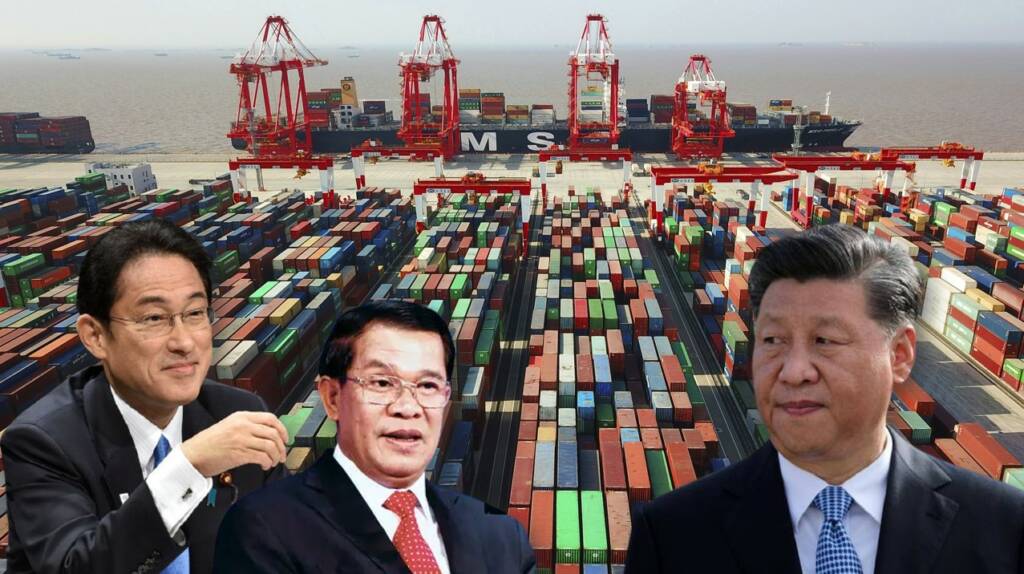The RCEP is the world’s largest trade bloc, which went into effect on the 1st of January this year. It comprises 15 nations of the Indo-Pacific region, including China, South Korea, Japan and Australia. It represents 30% of the world’s population and 30% of global GDP. It is expected that within 20 years of coming into force, the RCEP will eliminate 90% of the tariffs on imports between its signatories.
Why did China join RCEP?
China spearheaded its formation. It aspires to exploit this free trade agreement to shore up its economy. China’s economy flourished at a mad pace over the past 25 years only because of its huge export market. So, the country maintains a whopping 16 trade agreements with its trade partners.
But as the pushback in the form of sanctions and trade restrictions came to hit the Chinese economy during the years of the Donald Trump administration, China turned to RCEP to heal its wounds. But now Japan has moved to foil China’s strategy.
Japan’s strategy to foil China’s plans
As per a Nikkei Asia report, Japan is reportedly helping Cambodia build part of its special economic zone as a free trade port. The Japanese government and the Japan International Cooperation Agency are involved in developing this port.
Cambodia is expecting the RCEP to drive its economic growth in the coming year. A demand boom in Southeast Asia and a rise in cross-border e-commerce trade are other factors behind Cambodia’s optimization.
So, now Japan wants to capitalize on Cambodia’s rising economic stature by exploiting RCEP against China. In return, this will help the economies of Japan and Cambodia at the expense of China’s economy.
Top Japanese retailer Aeon is also planning to offer international logistics services in Cambodia. Aeon will build a roughly 30,000-sq.-meter logistics centre in the country’s special economic zone. Such types of logistics centres help traders enormously.
For instance, companies can stash large quantities of goods there for a certain period, and gradually withdraw them as needed and pay any applicable tariffs at that time. This will also make supply chains more stable and secure.
If this strategy is implemented, foreign companies would be able to import huge quantities of goods in these centres and later export the same to Chinese markets.
Japan’s involvement in Southeast Asia
Japan wants to turn Southeast Asia into a logistical hub. Already, several Japanese companies and manufacturers have facilities in Southeast Asian nations. In November last year, Japanese developer Daiwa House Industry had launched a similar logistics centre in Vietnam.
With Japan strengthening the logistics infrastructure of Southeast Asia, Tokyo will be able to control the supply chains in the region and let’s just say – life will get very difficult for China. Japan, by building logistics infrastructure in the region, is clearing the way for more and more Japanese companies to shift their base to Southeast Asia.
In October last year, former Japanese Prime Minister Yoshihide Suga had promised infrastructural aid to countries like Vietnam and Indonesia. His broad plan, which also includes countries like Laos, Cambodia, Thailand, and Myanmar is a direct affront to China’s much-touted Belt and Road Initiative, which has been exposed the world over as a debt-trap scheme.
Read More: Japan has launched an all out economic offensive to capitalise on China’s economic collapse
Cambodia is inundated with Chinese debt and now Japan has come to rescue it! In this process, Japan is weaponizing the RCEP against China itself. Japanese automobile company Toyota is also eying the Chinese EV market to expand its global footprints in the EV sector. So, China may have hoped RCEP to be a booster shot for its ailing economy; however, Japan’s strategy looks all set to turn it into a huge disaster.
